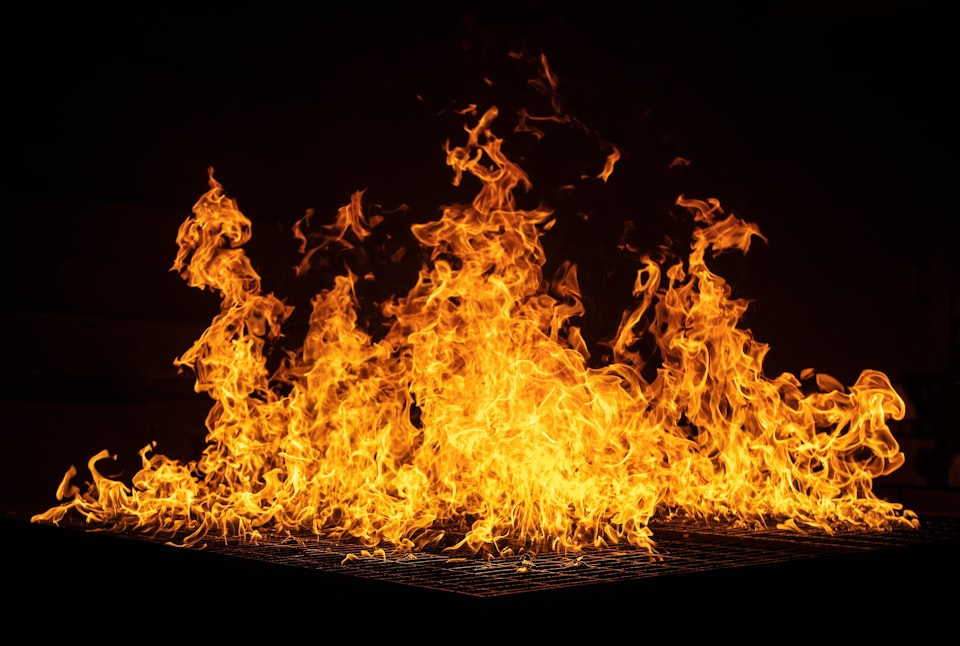Burns

Take home messages
- Burns patients are at risk of significant evaporative fluid loss, and should be resuscitated with crystalloid fluid according to the Parkland formula
- Anticipating future airway compromise is a key part of the anaesthetist's role
- A patient with hypovolaemic shock soon after a burn is likely to be caused by something else, such as bleeding or infection
- Significant burns require specialist management in a burns unit
Anaesthetic concerns in a burns patient
- Airway compromise
- Hypothermia
- Blood loss
- Overactive metabolism
- Severe pain
- Changes in pharmacokinetics and drug handling
- Monitoring difficulties
Risk factors for increased mortality
- Elderly patients
- More significant burns
- Airway compromise
- Significant comorbidities
What are the most common causes of death in major burns?
- Multiple organ failure
- Sepsis
- Burn shock
- Inhalational injury
Airway management in burns
All burns patients should be given 100% oxygen, to act both as pre-oxygenation in the case of rapid deterioration and need for intubation, but also to help treat carbon monoxide poisoning.
Any initial airway concerns are usually related to a low GCS, rather than inhalational injury, which becomes an issue later as tissues become inflamed and swell.
What are the indications for early intubation in a burns patient?
- GCS less than 8 or airway reflexes not intact
- Added sounds such as snoring or stridor
- Inadequate oxygenation with hypoxaemia
- Inadequate ventilation with hypercapnoea
- Deep facial or neck burns
- Any evidence of swelling of the oropharynx
What muscle relaxant should be used in a burns patient?
- The one you are most confident with!
- Rocuronium is safe in burns patients
- Suxamethonium is safe in the first 24 hours after the burn injury
- Between 24 hours and 1 year after the injury, the upregulation of extra-junctional receptors gives a greater risk of potentially fatal hyperkalaemia
Inhalational airway injury
What are the three components of inhalational airway injury?
- Upper airway thermal injury
- Lower airway thermal injury
- Noxious gas poisoning
Upper airway thermal injury
The mouth, tongue, pharynx and epiglottis can receive a huge amount of thermal energy by the inhalation of superheated fumes, causing them to swell significantly, leading to the following clinical signs:
- Stridor
- Hoarse voice
- Swollen Uvula
Lower airway thermal injury
This is caused less by the direct heating that is seen in the upper airway, and more by the inhaltion of material that is still burning. This strips the epithelium of the trachea and large airways, stimulating production of mucus and release of inflammatory mediators.
This can lead to bronchospasm and mucus plugging, with airway obstruction and alveolar collapse.
Signs and symptoms include:
- Very productive cough
- Wheeze
- Shortness of breath
- Mucosal hyperaemia and ulceration
Noxious gas poisoning
What are the symptoms of carbon monoxide poisoning?
- Headache
- Nausea and vomiting
- Reduced consciousness
- Collapse
- Convulsions
What effects does carbon monoxide have on tissue oxygenation?
- Left shift in the oxyhaemoglobin dissociation curve, reducing haemoglobin's ability to deliver oxygen to the tissues
- Uncoupling of oxidative phosphorylation, producing a histotoxic hypoxia
- A persistent lactataemia in a patient that has received adequate fluid resuscitation should make you think of cyanide poisoning
What effect does 100% oxygen have on carbon monoxide?
- 100% oxygen will reduce the elimination half life of carbon monoxide from four hours to less than an hour
- If you can give the patient hyperbaric oxygen, this reduces even further to less than thirty minutes
- This is only really used for patients failing to respond to treatment
- If HbCO level is greater than 25% then the patient should probably be intubated and mechanically ventilated
Breathing and circulation
What are your main concerns with regards to breathing in a burns patient?
- Restrictive thoracic burns that may require escharotomy
- Blast and schrapnel injurys
- ARDS from inhalational injury, or direct lung trauma, or subsequent infection
What is the Parkland Formula?
- Fluid resuscitation in burns should be calculated according to body weight and % body surface area affected
- If more than 15% body surface area, or 10%+smoke inhalation, then fluids are required
- Parkland formula = 4 ml kg−1 (%surface area)−1
- Give half before 8 hours since injury
- Give the other half over the subsequent 16 hours
- Ideally give Ringer's Lactate (Hartmann's) as this has the best evidence base
- Plasmalyte may also work, but there's not enough evidence yet to suggest it's as effective as Hartmann's
- Severe hypovolaemic shock immediately after a burn is more likely to be due to bleeding than the burn itself, so don't be distracted by a severe burn
Assessment of Burns
How can you assess the severity of a burn injury?
- Total body surface area
- Depth
- Lund and Browder Chart
- Rule of Nines in adults
How are burns categorised in terms of severity?
- Superficial - Red, dry and painful
- Partial thickness - Wet, blistering, red and painful
- Full thickness - White, painless, no bleeding
References and further reading
- BJA Education article
- Latenser BA. Critical care of the burn patient: the first 48 hours, Crit Care Med, 2009, vol. 37 (pg. 2819-26)
- The Royal College of Anaesthetists, Guidelines on the Provision of Anaesthetic Services, 2009(Chapter 14: Guidance on the Provision of Burns and Plastics Anaesthesia). London: The Royal College of Anaesthetists